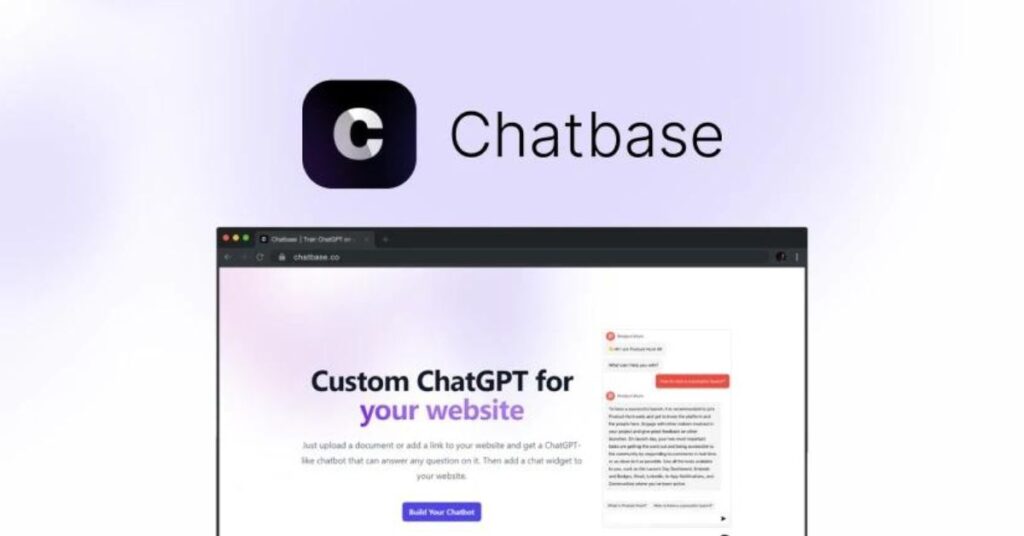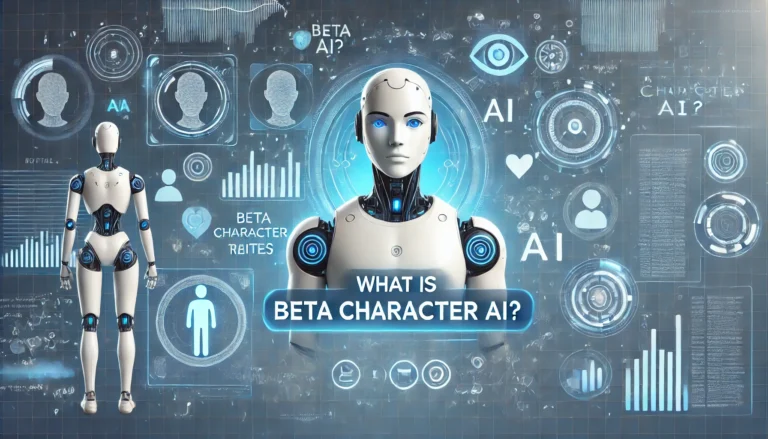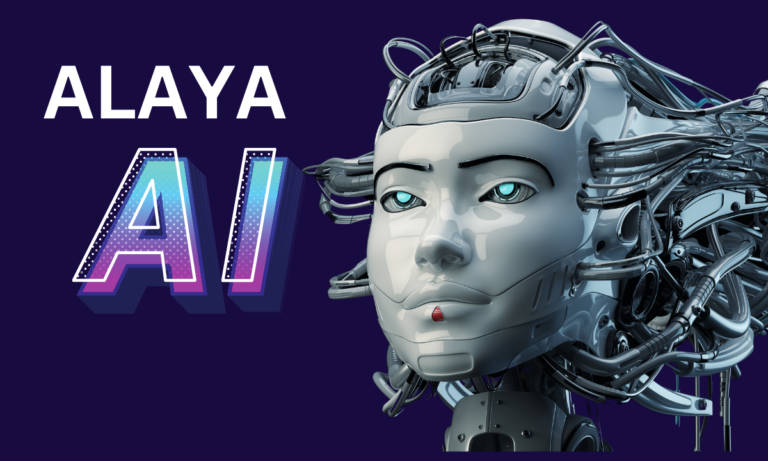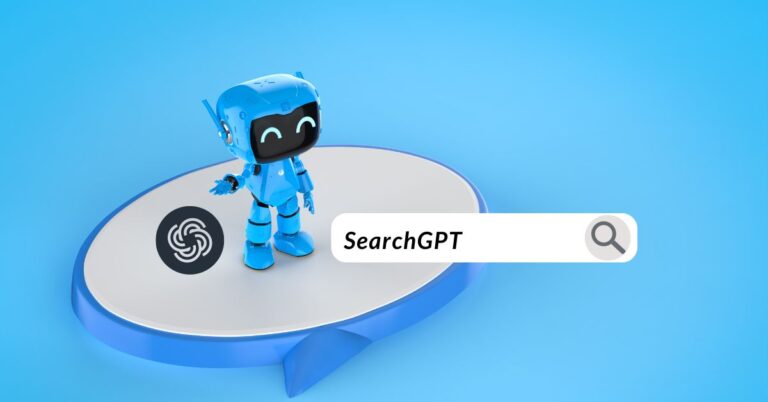Chatbase AI: How to Train ChatGPT on Custom Data
ChatGPT has become a potent tool for producing text that appears human in the age of artificial intelligence.. However, to fully utilize its potential, especially for specific applications, training ChatGPT on custom data becomes essential. Chatbase AI offers a robust solution for this need. In this article, we will delve into Chatbase AI, its functionalities, and a detailed guide on how to train ChatGPT on custom data.
What is Chatbase AI?
Chatbase AI is a platform designed to enhance and customize the capabilities of ChatGPT, an AI language model developed by OpenAI. With Chatbase AI, users can train ChatGPT on specific datasets, tailoring its responses to suit particular needs such as customer support, personalized communication, or content creation.
Chatbase AI stands out by offering an intuitive interface and powerful tools that make the process of training and fine-tuning ChatGPT straightforward, even for users without extensive technical backgrounds.
Why Train ChatGPT on Custom Data?

Training ChatGPT on custom data is essential for several reasons:
- Relevance: Custom training ensures that the AI’s responses are specifically tailored to your industry or use case, making interactions more meaningful and effective.
- Accuracy: By training on real-world data relevant to your needs, the AI model becomes more accurate, reducing errors and misunderstandings.
- Efficiency: Custom-trained models can handle specific queries more effectively, saving time and resources by minimizing the need for human intervention.
- Personalization: Tailoring the AI to understand and use the specific language, terminology, and nuances of your field enhances user satisfaction and engagement.
Getting Started with Chatbase AI
Starting with Chatbase AI involves a few key steps:
- Sign Up: Create an account on the Chatbase AI website.
- Explore Features: Familiarize yourself with the platform’s features, tools, and capabilities.
- Choose a Plan: Select a subscription plan that aligns with your requirements and budget.
Steps to Train ChatGPT Using Chatbase AI
Training ChatGPT on custom data using Chatbase AI involves several stages:
Preparing Your Data
- Data Collection: Gather relevant data that reflects the type of interactions you want the AI to handle. This could include customer service logs, FAQ documents, product descriptions, or any other text data pertinent to your application.
- Data Cleaning and Formatting: Ensure the data is clean, well-organized, and formatted correctly. Remove any irrelevant or redundant information to streamline the training process.
Uploading Data to Chatbase
- Login: Access your Chatbase AI account and navigate to the data upload section.
- Upload Data: Import your cleaned and formatted dataset. Chatbase AI supports various data formats, making it easy to upload your files.
Training the Model
- Model Selection: Choose the specific version of ChatGPT you wish to train.
- Configure Training Parameters: Set the training parameters, including learning rate, number of epochs, and batch size. These settings will influence how the model learns from your data.
- Initiate Training: Start the training process and monitor its progress through the Chatbase AI dashboard.
Testing and Fine-Tuning
- Evaluate Performance: Once training is complete, test the model with different inputs to assess its performance. Look for areas where it excels and where improvements are needed.
- Fine-Tune: Make necessary adjustments to the training parameters or data and re-train the model if required. This iterative process helps refine the AI’s accuracy and relevance.
Best Practices for Training ChatGPT
To achieve optimal results when training ChatGPT, consider the following best practices:
Data Quality
High-quality, relevant data is crucial for effective training. Ensure that your dataset is comprehensive and accurately represents the types of interactions the AI will handle.
Incremental Training
Start with a smaller dataset to initiate the training process. Gradually increase the data size in subsequent training sessions to prevent the model from being overwhelmed and to fine-tune its learning incrementally.
Regular Updates
Continuously update the model with new data to keep it relevant and accurate. This is especially important in dynamic fields where information frequently changes.
Performance Monitoring
Regularly monitor the model’s performance and user feedback. Use this information to make informed adjustments and improvements to the training process.
Comparison of Training Parameters
| Parameter | Description | Recommended Setting |
|---|---|---|
| Learning Rate | Controls the speed of learning | 0.001 – 0.01 |
| Epochs | Number of training iterations over the dataset | 10 – 50 |
| Batch Size | Number of samples per training batch | 16 – 64 |
| Data Augmentation | Techniques to increase dataset size artificially | Case-specific, use sparingly |
FAQs
ChatGPT is an AI model developed by OpenAI, while Chatbase AI is a platform that allows users to train ChatGPT on custom datasets to tailor its responses to specific needs.
The training duration depends on the size of your dataset and the complexity of the training parameters. It can range from a few hours to several days.
Basic knowledge of data formatting and AI training concepts is helpful, but Chatbase AI is designed to be user-friendly, with a straightforward interface for non-technical users.
Chatbase AI offers different subscription plans, including a free tier with limited features. For advanced functionalities, a paid plan may be required.
You can use various types of textual data, such as documents, chat logs, FAQs, and any relevant text data that will help train the model effectively.
Conclusion
Training ChatGPT on custom data using Chatbase AI unlocks a world of possibilities for businesses and individuals looking to leverage AI for specialized applications. By following the steps outlined in this guide, you can enhance the performance and relevance of ChatGPT, making it a valuable tool tailored to your specific needs. Embrace the future of AI with Chatbase AI and unlock the full potential of customized AI interactions.






